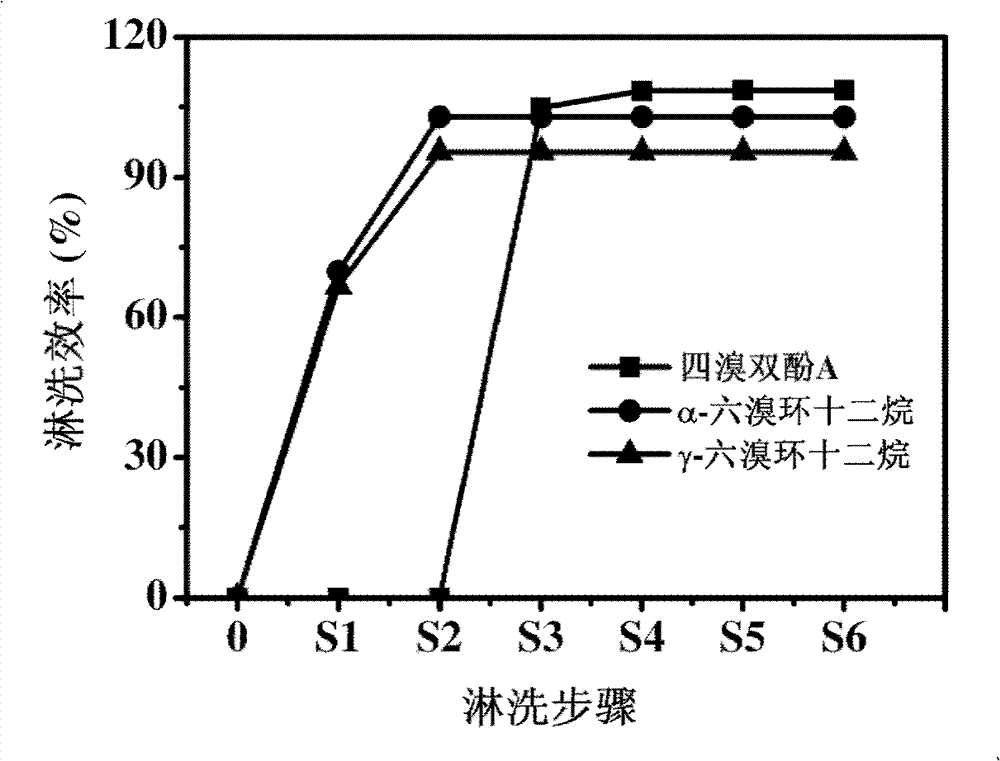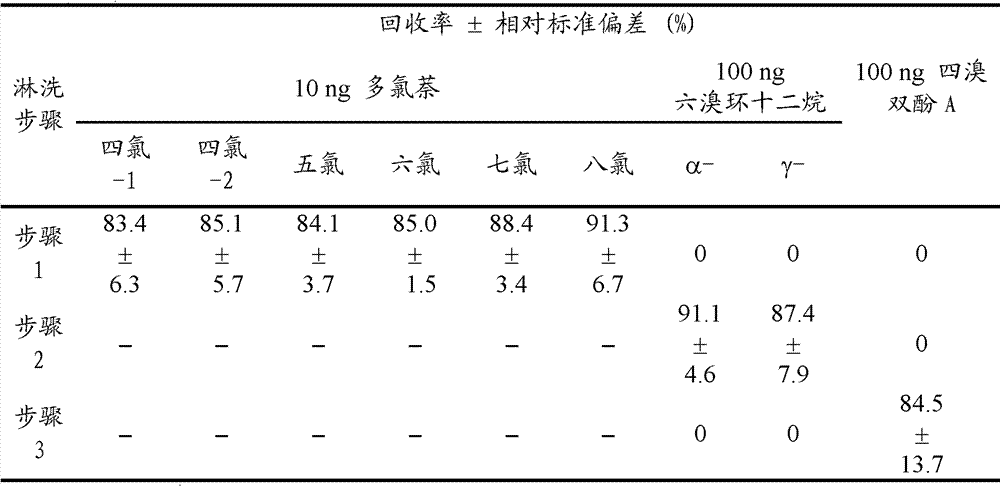Selective separation of PCNs (polychlorinated naphthalenes congeners), HBCDss (hexabromocyclododecanes) and TBBPA (tetrabromobisphenol A) in complex samples
A complex sample and selective technology, applied in the field of selective separation, to achieve good separation effect, high separation efficiency and simple operation
- Summary
- Abstract
- Description
- Claims
- Application Information
AI Technical Summary
Problems solved by technology
Method used
Image
Examples
Embodiment 1
[0022] 8 g of silica gel was packed tightly into a chromatographic column (outer diameter 26 mm, length 305 mm), and a vacuum pump was used to pump the filler tightly. Before loading the sample, use 50mL n-hexane to activate the chromatography column; then mix 1mL polychlorinated naphthalene, hexabromocyclododecane and tetrabromobisphenol A with the -1 , Hexabromocyclododecane 500ng mL -1 , Tetrabromobisphenol A 500ng mL -1 , and the rest is n-hexane solvent) for sample loading. After the sample was loaded, 200 mL of n-hexane, 200 mL of n-hexane and dichloromethane mixed solvent (volume ratio 1:1), and 4×50 mL of dichloromethane were used for elution to obtain six different eluents. The six groups of eluents were rotary evaporated to constant volume, and then analyzed by gas chromatography tandem mass spectrometry or high performance liquid chromatography tandem mass spectrometry.
[0023] From figure 1 It can be seen that when silica gel is used as the chromatography colu...
Embodiment 2
[0025] 8g of 3% deactivated silica gel (the mass ratio of deionized water and silica gel is 3: 100 is used to mix, and the deactivation process is carried out) is tightly packed in the chromatographic column (26mm in outer diameter, 305mm in length), and uses a vacuum pump to The filling is firm. Before loading the sample, use 50mL n-hexane to activate the chromatography column; then mix 1mL polychlorinated naphthalene, hexabromocyclododecane and tetrabromobisphenol A with the -1 , Hexabromocyclododecane 500ng mL -1 , Tetrabromobisphenol A 500ng mL -1 , and the rest is n-hexane solvent) for sample loading. After loading the sample, use 100mL n-hexane, 2×50mL n-hexane and dichloromethane mixed solvent (volume ratio 1:1), 2×50mL n-hexane and dichloromethane mixed solvent (volume ratio 1:3) and 2× 50mL of dichloromethane was used for elution, and seven groups of different eluents were obtained. The seven groups of eluents were rotary evaporated to constant volume, and then an...
Embodiment 3
[0028] First, 10 g of soil was extracted by the Soxhlet extraction method (the extraction solvent was a mixed solvent of n-hexane and dichloromethane with a volume ratio of 250 mL of 1:1), and then the extract containing the target analyte was concentrated by rotary evaporation until it was concentrated to After about 500 μL, rinse the flat-bottomed flask with n-hexane three times, then transfer the eluent to a test tube and dilute to 10 mL.
[0029] 8g of 3% deactivated silica gel (the mass ratio of deionized water and silica gel is 3: 100 is used to mix, and the deactivation process is carried out) is tightly packed in the chromatographic column (26mm in outer diameter, 305mm in length), and uses a vacuum pump to The filling is firm. Before loading the sample, use 50mL n-hexane to activate the chromatographic column; then add polychlorinated naphthalene, hexabromocyclododecane and tetrabromobisphenol A mixed standard to 1mL (polychlorinated naphthalene 100ngmL -1 , Hexabrom...
PUM
 Login to View More
Login to View More Abstract
Description
Claims
Application Information
 Login to View More
Login to View More - R&D
- Intellectual Property
- Life Sciences
- Materials
- Tech Scout
- Unparalleled Data Quality
- Higher Quality Content
- 60% Fewer Hallucinations
Browse by: Latest US Patents, China's latest patents, Technical Efficacy Thesaurus, Application Domain, Technology Topic, Popular Technical Reports.
© 2025 PatSnap. All rights reserved.Legal|Privacy policy|Modern Slavery Act Transparency Statement|Sitemap|About US| Contact US: help@patsnap.com



